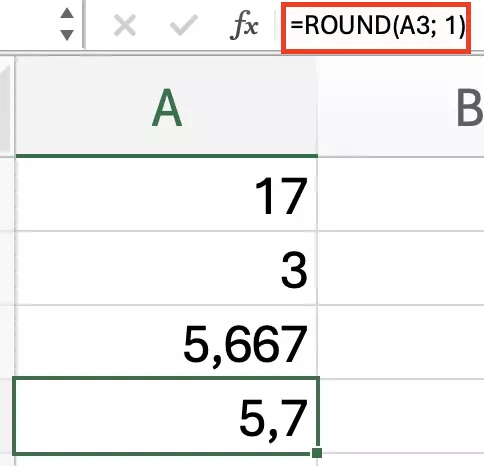How do you round in Excel?
Excel not only helps you to create clear tables and charts, it can also do a lot of computing work for you. The Excel ROUND function can be used to automatically round values up or down.
- Store, share, and edit data easily
- Backed up and highly secure
- Sync with all devices
What does the Excel ROUND function do?
Excel offers you several functions for rounding. The options shown here work for Excel versions from Office 2016 onwards and Microsoft 365. But let’s start with the simplest variant, the ROUND function. Using it is relatively simple: First, enter the number you want to round. Then, in the second parameter of the ROUND formula, enter a number to indicate how many places Excel should round the value to.
The parameter number refers to the value that you want to round. You can enter a number directly into the formula or reference another cell.
The num_digits parameter determines where the rounding will occur. Positive values specify the number of decimal places. Therefore, a value of 0 results in no decimal places, producing an integer. Negative values round the digits to the left of the decimal point, with -1 rounding to the nearest 10, -2 to the nearest 100 and so forth.
You can use ROUND either through the Insert Function () feature or by directly entering the function in the formula bar. With the latter method, remember to start the function with an equals sign (=); otherwise, Excel will treat your input as display text.

You don’t have to use a dedicated cell to round a value. In Excel, you can also nest functions, allowing you to include the ROUND function in another formula.
In this example, we’ve calculated the average of different numbers and rounded the result. Only the rounded value appears in the cell.
What is MROUND?
With the function MROUND, you can round a value to a multiple of a different number. Just like with the ROUND function, you need to enter the value you want to round first. For this parameter, you can enter a value, a cell reference or another function. For the second parameter, enter the multiple that you want the value to be rounded to.
For example, you can use the MROUND function to return results in increments of 25. The distance to the multiple decides whether it is rounded up or down. Excel will always choose the shortest distance. If the distance is equal in both directions, the value will be rounded up.
If you want to round minutes up or down to full hours, you can use the MROUND function.

How to use EVEN & ODD for simple rounding
With two very simple rounding methods, you can round to the next even or odd integer. It doesn’t matter if you want to round the number with or without decimal places. Only the number to be rounded occurs in the syntax as the parameter.
Positive numbers are always rounded up (3 becomes 4); negative numbers always round down (-1 becomes -2).
How to format cells to display the rounded version of numbers
You can also format cells in Excel to only display a certain number of decimal places. When you right-click on a cell, a context menu will appear. Towards the bottom of this menu is the option Format cells…. Under the Number tab, you’ll find the category Number. Here, you can specify the number of decimal places that should be displayed. For example, if you enter 0, only integers will be displayed. In contrast to the ROUND function, using formatting to round only affects the presentation. Your spreadsheet will show the rounded number, but the cell itself still contains the correct value with all the decimal places included.
This difference becomes apparent when you perform calculations with the numbers. If you have the values 2.4, 2.3, and 3.3 in cells that are formatted not to display decimal places, you’ll only see 2, 2 and 3. If you use the sum function in Excel to calculate the sum of these values, Excel will show 8 as the result. This is because the program still takes the decimal places into account. If, however, you opted to use the ROUND function with these values, the result would be 7.

- Store, share, and edit data easily
- Backed up and highly secure
- Sync with all devices

